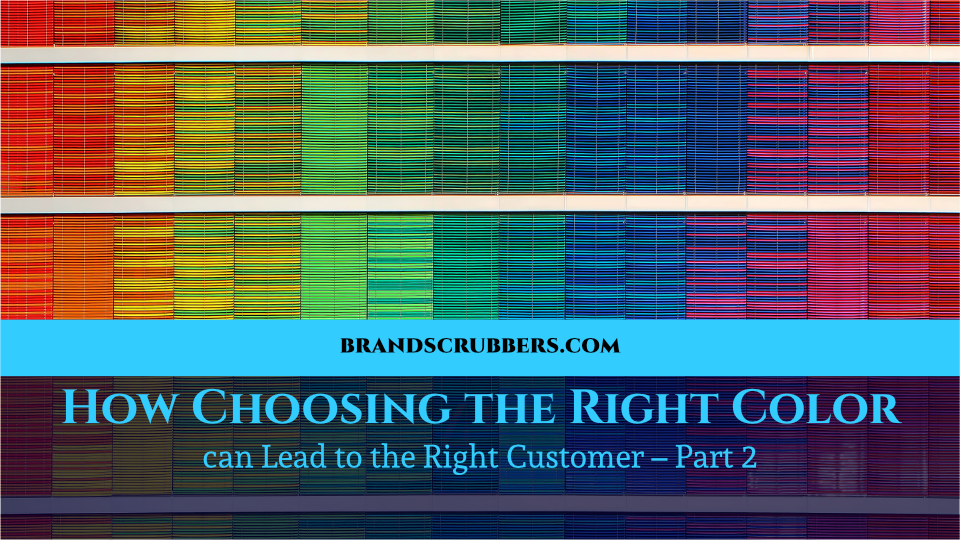Welcome back! Last week we introduced color theory and looked at complementary, analogous and triadic color schemes. Today, we’re going to look at the last 3 basic color schemes; split complementary, rectangular and square.
Split Complementary Color
Split complementary color schemes are based on the complementary color scheme, but instead of the exact opposite color, the two adjacent are used. This scheme still provides the natural contrast of the complimentary version, but because of the third color, it generally results in a more harmonious design. Because of this, the split complementary scheme is great for beginners.
Rectangular (tetradic) Color
The rectangular color scheme is also based on the complementary color scheme, using two complementary pairs together. This allows for many possibilities in terms of your design, but the balance between the warm and cool tones is integral to making this scheme look good. As with most color schemes, using one color as the dominant, and the rest as accents is best.
Square Color
Although the square color scheme is similar to the one above, the colours are actually evenly spaced around the colour wheel. With this scheme, it is even more important to use one colour as the dominant, and the other 3 as accents. Due to its extreme nature, using all 4 colours equally can quickly make your design look flashy and overdone. Keeping in mind the balance between warm and cool tones will also help ensure your design is effective.
Now that we’ve looked through the 6 basic color schemes, you may be wondering where to start. Generally, choosing one color, and then utilizing the color schemes to find the accents is a great way to begin.
To choose the right color for your brand, you first need to identify what types of products and services you provide, and what types of clients you want to attract. Based on this, it should be pretty easy to figure out which color should be your dominant.
And I’ll give you a hint here; it’s probably not your favourite color. When it comes to branding, the focus should always be on what types of clients you want to attract. If you base your decisions on sound research like this, you are much less likely to have to rebrand in a few years once you’ve realized that the mint green of your mom’s kitchen doesn’t really say professional security company.
Colour Meanings
Although not a sound science, there are many studies currently being conducted on how color affects our emotional centres. The results are not by any means conclusive, BUT they do provide a great place for us to start.
During my research for this, I found an excellent site with a downloadable PDF of color meanings and uses, that I highly recommend taking a look at. I’ve condensed the information below, but their list is much more comprehensive.
Red
Keywords: passion, drama, urgency
Red is great to create a sense of passion in your viewers. It is also said to stimulate the appetite, so it’s a great choice for food services. Red can be straining on the eyes in large doses though, so it’s important to use carefully.
Orange
Keywords: encouragement, creativity, individuality
Orange is a warm and comforting color. It can help a person to feel at home, giving them encouragement and empowering them as individuals. Orange would be a great choice for any company that is dynamic or child-focused.
Yellow
Keywords: optimism, joy, opportunity
Yellow is the colour of the sun and is associated with brightness, confidence and joy. Yellow would work well for companies that want their clients to feel happy and focused.
Green
Keywords: growth, health, nature
Green has probably one of the most obvious color meanings. It’s the colour of nature, and thus represents growth and health. Any company that has a focus on health, growth or nature could easily gain benefits by incorporating green into their logo.
Blue
Keywords: trust, honesty, loyalty
Blue is the color most used in the corporate world, as it is professional, stable and honest. Based on the peaceful nature of the sky or sea, when people see blue they generally feel calm and grounded.
Purple
Keywords: spirituality, imagination, compassion
Purple is the color of the crown chakra and thus is associated with spirituality. It is also the color used for royalty, so it can make your product or service seem more luxurious.
Pink
Keywords: sensitivity, love, femininity
Pink can be a difficult color to implement, as it has very specific meanings to people. It is seen as the feminine color, and because of this, it is compassionate, nurturing and loving. Pink would be great for any company that focuses on openness and inclusivity.
Brown
Keywords: earth, nature, comfort
Brown, like green, is obvious due to its applications in nature. It is a grounding color and therefore associated with stability, hard work and honesty. Brown isn’t used as much as it could be, due to its lack of excitement, but would be useful for a company that prides itself on tradition and hard work.
Black
Keywords: mystery, sophistication, control
Black is a sophisticated color that can be authoritative and maintain a sense of control. It is also seen as elegant and timeless and is often utilized as a way to make other colors stand out. A clean and simple black logo will generally stand the test of time better than other colors.
And there you have it! With basic color theory under your belt, you can now start researching your target audience and make sure your branding is attracting the right clients.
What do you think of the color meanings listed above?
Let me know in the comments!
Stephanie Butler


Recent Comments